The New York Rangers certainly have no interest in playing the rest of the season without Filip Chytil, the young center who the Blueshirts see as a key part of their future.
Serious concern, though, has to exist within the organization over Chytil’s susceptibility to concussions, the most recent of which (suspected, anyway) has kept the 24-year-old out of the lineup since Nov. 2. Though Chytil has been skating, no timetable for his return has been announced.
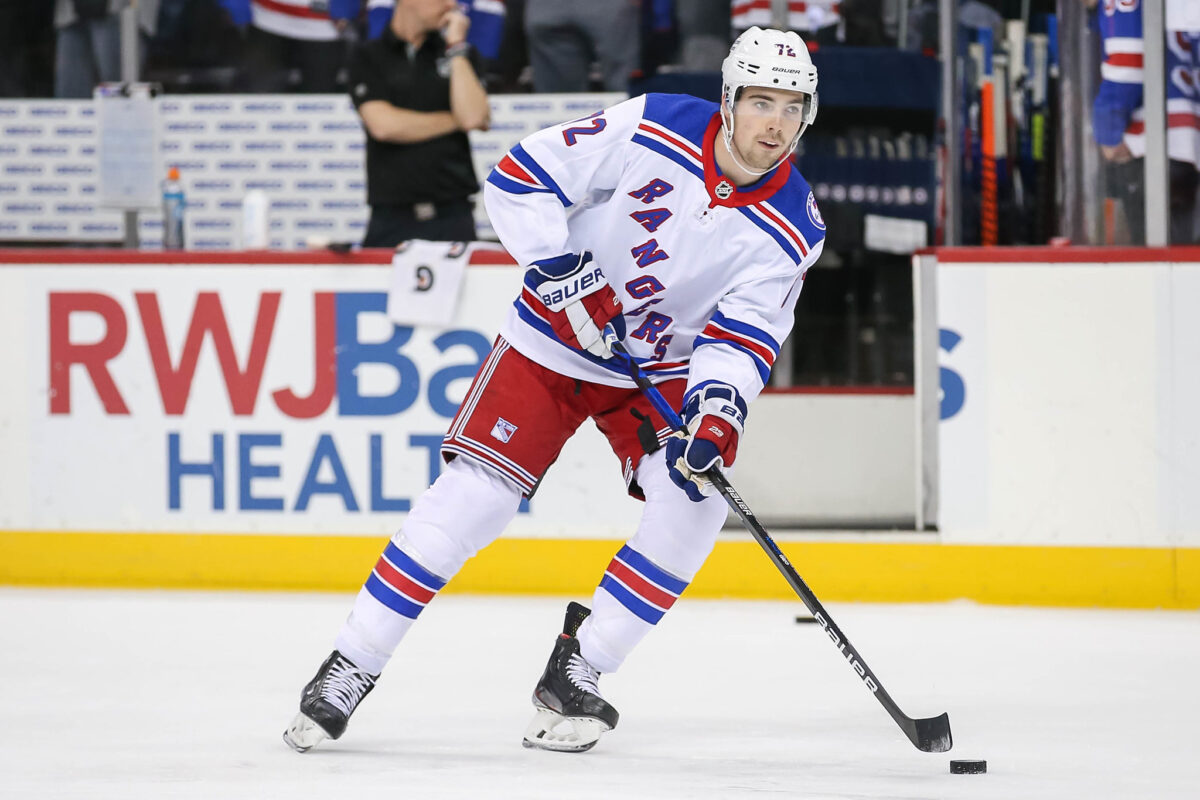
The Rangers haven’t suffered much from Chytil’s absence to this point, surging out to an 19-6-1 record on the season. As much as the Blueshirts want to see Chytil back in the lineup, however, his being out has come with one not-so-small benefit that could be lost when (or if) he comes back.
When Chytil went out after being injured in an open-ice collision with the Carolina Hurricanes’ Jesper Fast, Tyler Pitlick drew into the lineup, with usual fourth-line center Nick Bonino moving up to the third unit and Vincent Trocheck taking Chytil’s spot on the second line with Artemi Panarin and Alexis Lafreniere. The addition of Pitlick to the fourth forward unit has, improbably, transformed that line into a highly-effective one after the early-season edition struggled to contribute as cohesive group.
Pitlick’s Entry Into Lineup Transformed 4th Line
That trio of Bonino, Barclay Goodrow and Jimmy Vesey, to be sure, was made up of three players who provide plenty on a nightly basis. Bonino has won 52.2 percent of his faceoffs, leads NHL forwards with 53 blocked shots and is a superlative defensive player. Two-time Stanley Cup champion Goodrow brings physical play and intangibles, while Vesey’s versatility and penalty-killing – a situation in which Bonino and Goodrow also do plenty of heavy lifting – give the Rangers three very useful bottom-of-the-lineup forwards.
Yet the group was, to employ a cliche, less than the sum of its parts as a unit. Formed as the regular fourth line starting with the fourth game of the season, Bonino-Goodrow-Vesey has compiled a ghastly 24.1 Corsi for percentage in 57:18 together, yielding 32 scoring chances against to 11 for and a nightmarish 18 high-danger chances against and just two for. The advanced metrics supported the eye test, as the trio was consistently pinned in their own zone in their seven games as the regular fourth line before Chytil was sidelined.
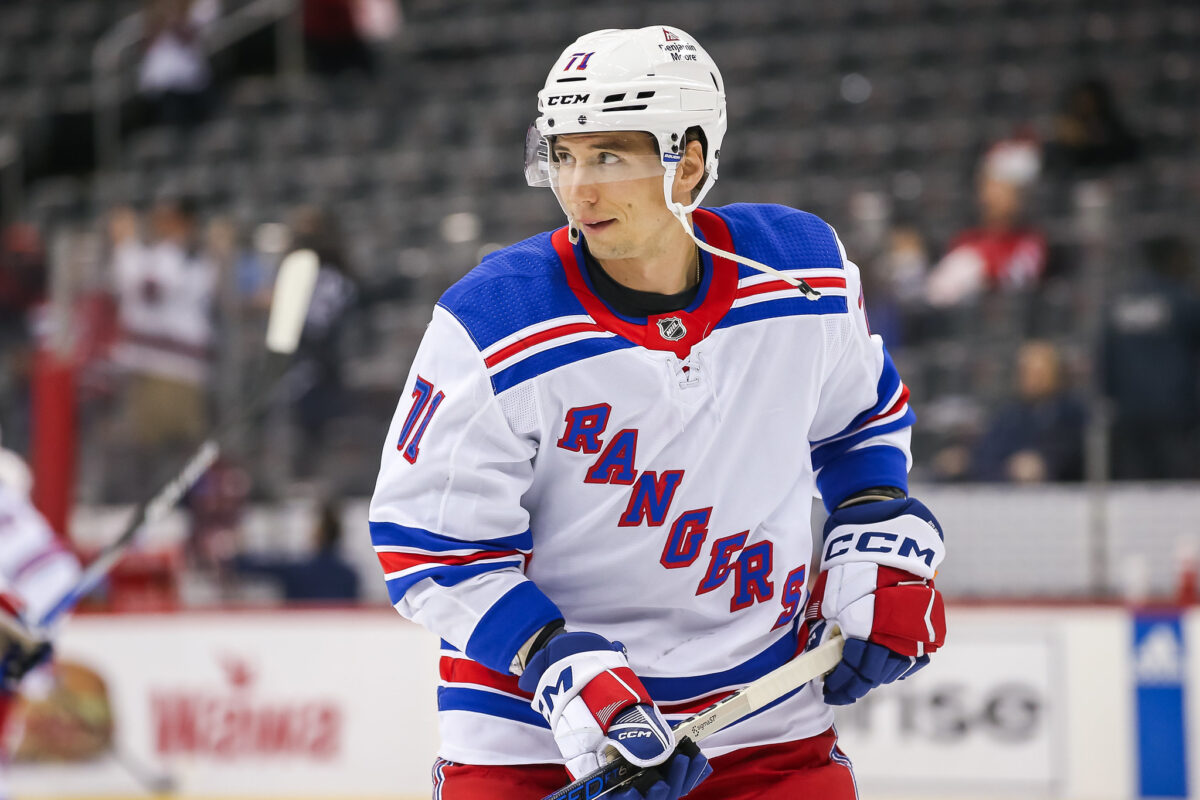
That all changed when Pitlick, who’s playing for his eighth team in a 10-year career, got the call. The 6-foot-2, 200-pound right wing’s straight-line speed, hitting and in-your-face approach forged a sense of identity for the line, meshing with Vesey’s quick, active game and Goodrow’s grind, giving the Rangers a fourth line that blended perfectly with common style and purpose.
The results were apparent immediately, as the unit began to churn out high-intensity, grinding shifts that often pinned opponents in their own zone – exactly what coaches look for in a fourth line. Despite playing in only 18 of the first 26 games, Pitlick’s 38 hits are tied for third on the team. Vesey has been terrific since this group was put together, scoring six goals in 16 games amidst the best stretch of his two stints in a Blueshirt. Goodrow has won a stunning 58.9 percent of his faceoffs this season, making his move to center seamless following the elevation of Bonino to the third line.
The advanced metrics that painted such a poor picture of the Vesey-Bonino-Goodrow unit show a vastly different impact for Vesey-Goodrow-Pitlick. In 96:13 together, the group has posted a 51.4 CF% and expected goals for of 55.7, generating 42 scoring chances for to 39 against, including 18 high-dangers chances for to 13 against.
Related: Rangers’ Chris Drury Getting Great Payoff From Bargain Contracts
The effectiveness of the line, however, goes beyond pinning opponents in the defensive zone. Coach Peter Laviolette had been trying out the Vesey-Bonino-Goodrow unit as a matchup line against other teams’ top lines late in games. The latter’s ugly underlying numbers indicate that it wasn’t working, albeit in a somewhat small sample size.
In the Rangers’ 4-1 victory over the formidable Los Angeles Kings on Dec. 10, Laviolette ran his current fourth line out against the Kings’ top trio of Quinton Byfield, Anze Kopitar and Adrian Kempe, a tough assignment for any line in the NHL. The results for the unit were outstanding – a 61.5 CF% and three scoring chances for to one against in 8:43 at 5-on-5 for the game. Vesey scored in the first period to give the Blueshirts a 2-0 lead. The Kings’ only goal came from Phillip Danault on the power play.
“It was a good matchup. We didn’t stick with it 100 percent, but they probably caught 60-70 percent of their shifts against that line,” Laviolette said. “I thought they did a great job.”
Goodrow returned after missing one game due to taking a puck to the face, wearing a full face guard that seemed to symbolize the heart-and-soul nature of the unit.
Chytil’s Return Would Likely Break Up Goodrow-Vesey-Pitlick Unit
So will the Rangers be able to roll with this fourth line for the rest of this extremely promising season? It’s not a question for right now, but if and when Chytil returns – again, something the Rangers very much want to happen – keeping this group together might be tricky, assuming all the players involved are at full health.
The highly likely scenario for reinserting Chytil to the lineup would be to put him on the third unit, which would naturally make that group more offensively potent and the lineup longer and deeper. That, however, pushes Bonino back to middle of the fourth line. While that’s the correct long-term role for him, doing so means the bottom forward group gets shuffled – perhaps back to the Vesey-Bonino-Goodrow alignment that wasn’t a good one earlier in the season.
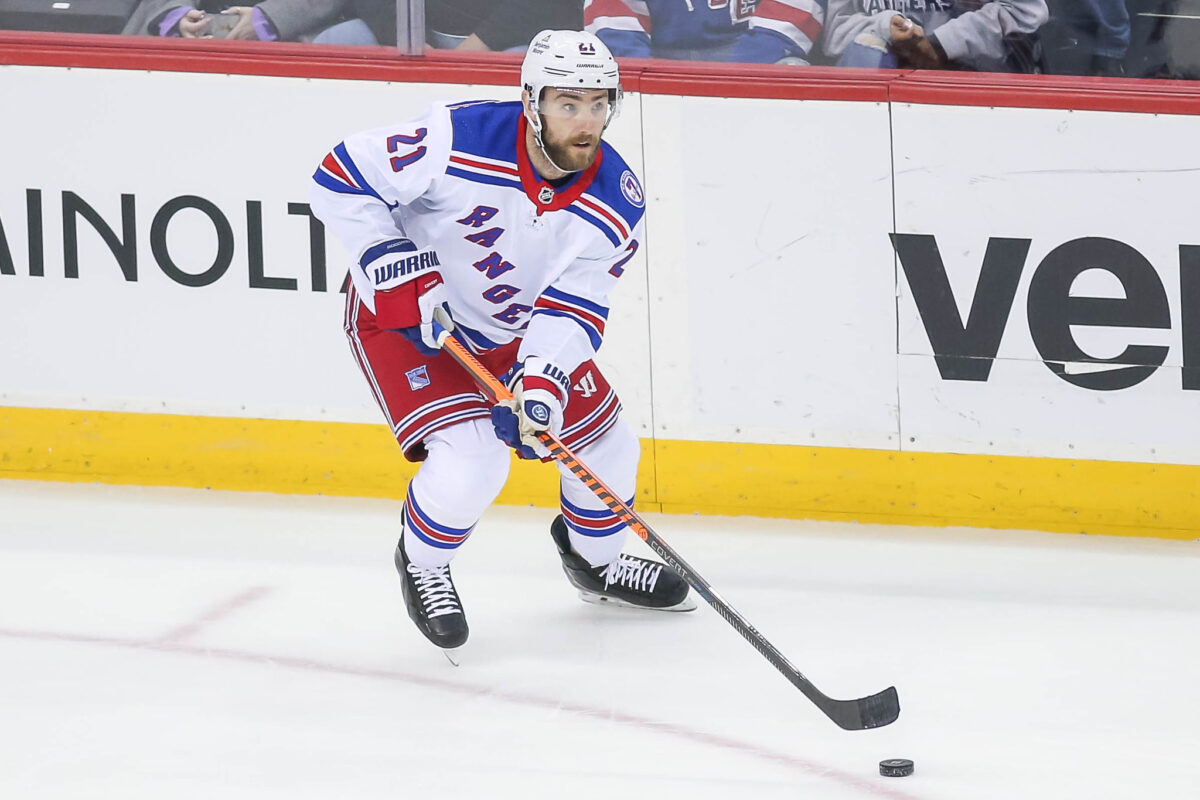
Bonino, who does so many of the little things and made an outstanding play with his hand to keep the puck in at the blue line and set up Vesey’s goal against Los Angeles, isn’t coming out of the lineup. Goodrow, despite being a whipping boy for a portion of the fan base over his bloated contract, isn’t either. Putting Vesey in the press box would also be a non-starter at this point.
That would leave Pitlick, whose addition amounted to a clear before-and-after delineation for the fourth line, to sit out. Journeyman or not, the numbers don’t lie when it comes to the 32-year-old’s effect on the unit’s turnaround. More of a collection of three solid players than a well-balanced line before Pitlick entered the picture, the bottom forward unit has been unquestionably transformed with him manning the right side.
There’s no easy answer to this. Even if Chytil isn’t able to return from his latest (again, assumed) head injury, the Rangers would have to address his absence via the trade market; going into the playoffs with Bonino miscast as a third-liner isn’t a recipe for a long postseason run. He’ll have to end up back on the fourth line at some point. Conversely, messing with what is working so well at the bottom of the forward lineup could amount to the Rangers getting worse, regardless of who they might add at the trade deadline. Breaking up a highly impactful fourth forward trio, one that’s growing into a matchup role to augment its hard forechecking identity, is potentially dangerous.
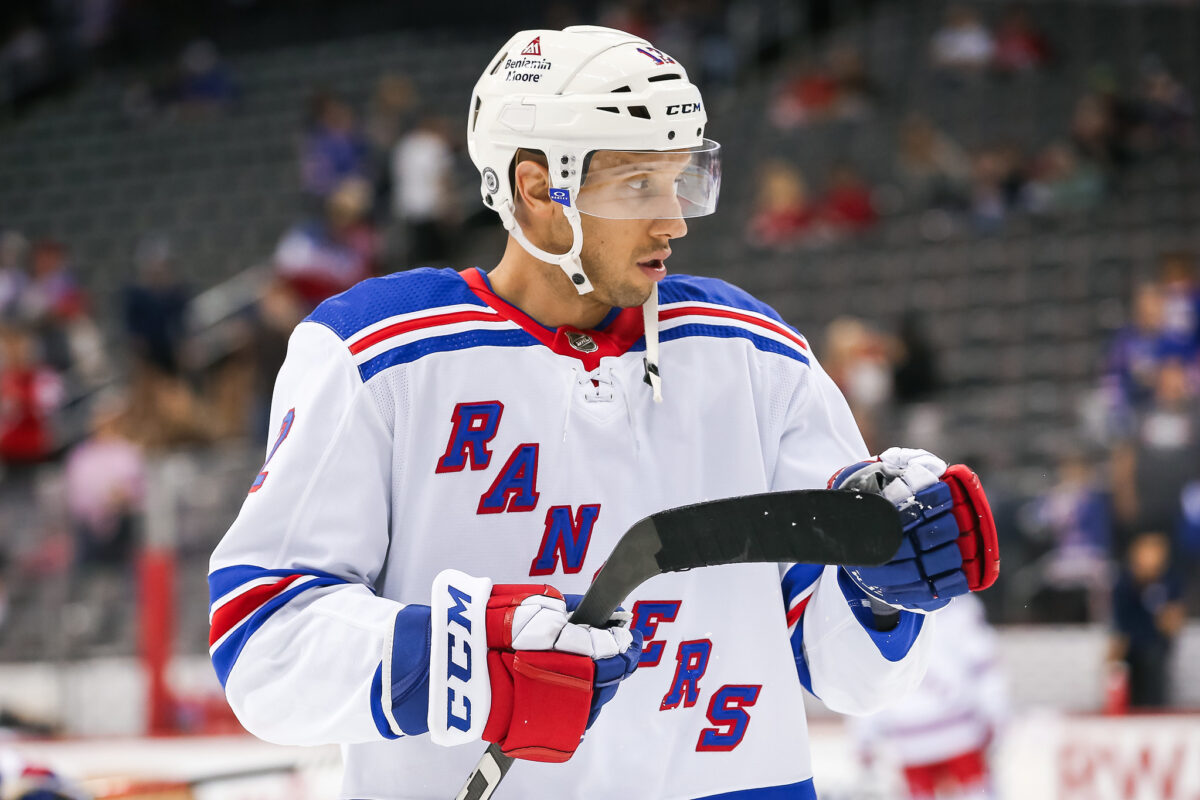
The Blueshirts’ deep postseason runs of recent history have been fueled in part by consequential fourth lines. Combinations of Kevin Rooney, Tyler Motte, Goodrow and Ryan Reaves were abrasive, fast and physical in the club’s 2022 push to the Eastern Conference Final. Tanner Glass, Dom Moore and James Sheppard were a handful for opponents of the 2014-15 Rangers as they reached Game 7 of the East Final, while Moore, Brian Boyle and Derek Dorsett/Dan Carcillo formed the franchise’s best fourth line in recent memory amidst the Blueshirts’ surge to the Stanley Cup Final the season before.
Bottom-Six Forward Depth Has Been Key to Rangers’ Fast Start
Those units excelled in the playoffs, when physicality and forechecking are crucial and teams need contributions from throughout the lineup, with intensity rising, scoring chances decreasing and top offensive players sometimes neutralized. The Rangers’ early-season fourth line was more of an assortment of indispensable bottom-six forwards, not an organic partnership, as the data so starkly indicated. That group wasn’t fast enough, with Vesey being the one outstanding skater, and not nearly physical enough, with Goodrow being the only one to fit that description.
Bonino is invaluable, but the fact remains that the line more closely resembled a place to stash important players for when they were needed to kill penalties and win defensive zone faceoffs when called upon, rather than the outstanding forward group that it is at present. Vesey-Goodrow-Pitlick is faster and more aggressive, a group that is clicking and has been for some time now.
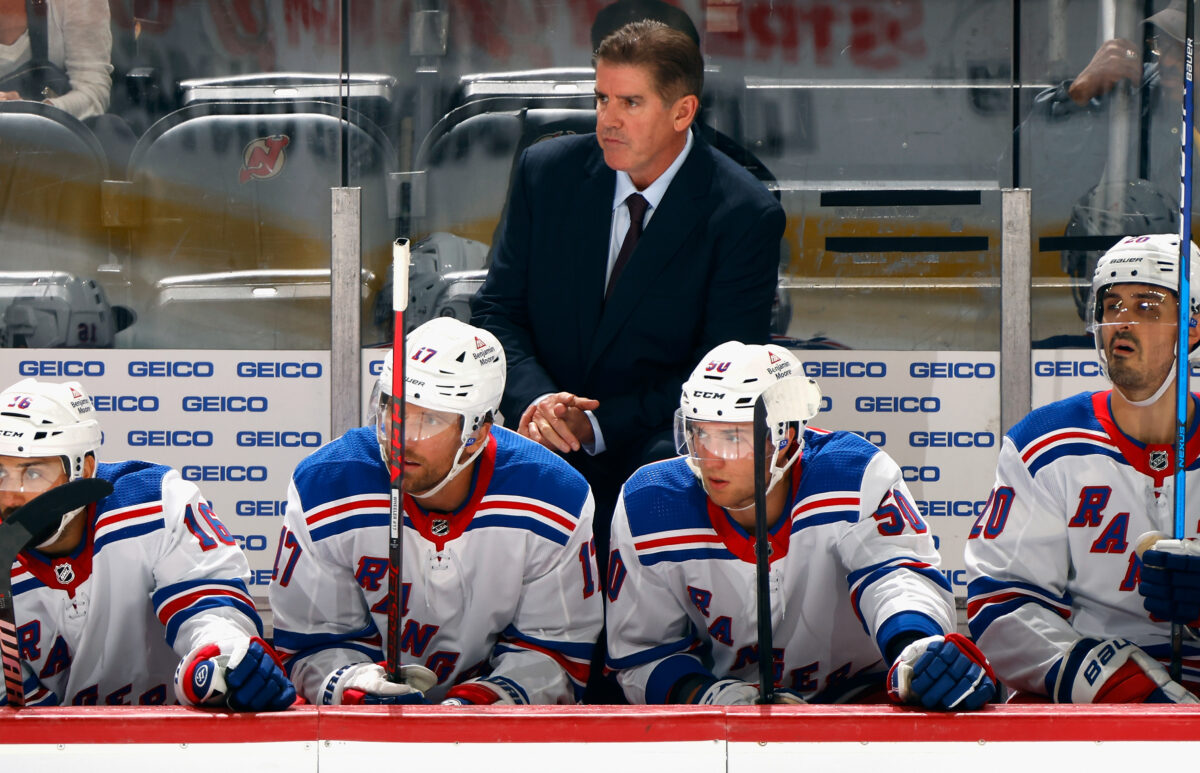
This is not a problem that requires a pressing solution with Chytil’s status still uncertain. It is, however, one that will have to get resolved at some point, with the need for a scoring third-line center being a necessity. The situation could work itself out due to injury or ineffectiveness. If not, Laviolette might have to make some hard personnel choices as he looks to maintain the contribution level he’s currently receiving from his fourth line.
Either way, recent Rangers playoff history suggests this is no small matter. For all of the the top-six success stories that have marked the Blueshirts’ outstanding start – Panarin’s MVP push, Lafreniere’s rise, Vincent Trocheck’s all-around brilliance, Chris Kreider’s steady goal-scoring – the team’s newfound bottom-six depth has been of vital importance as well. Continuing to maximize it as the roster evolves and more options present themselves should prove to be a formidable challenge for Laviolette, who has managed to push all the right buttons so far.